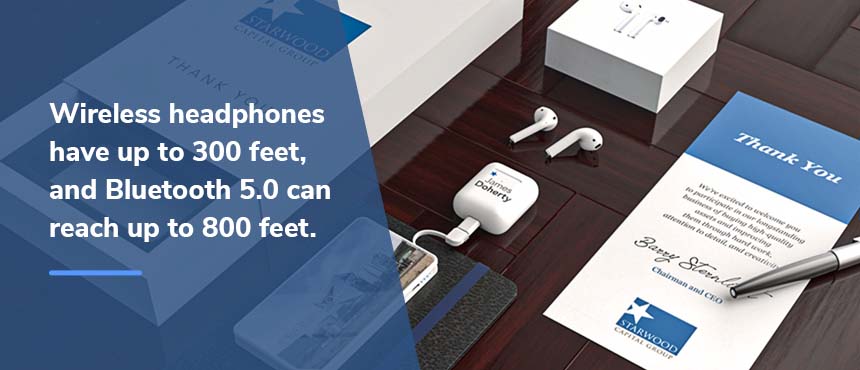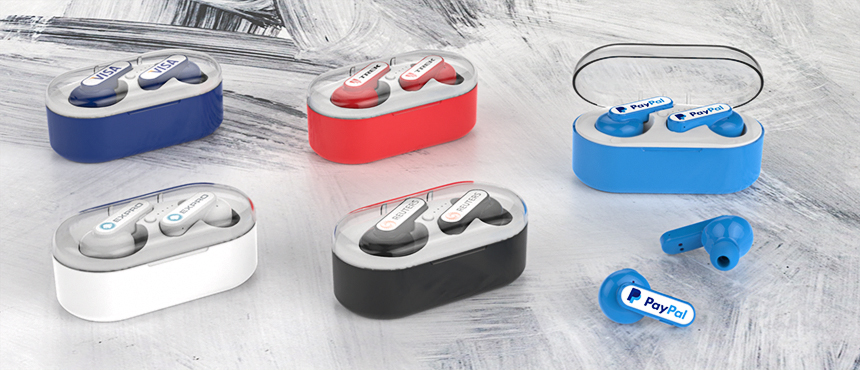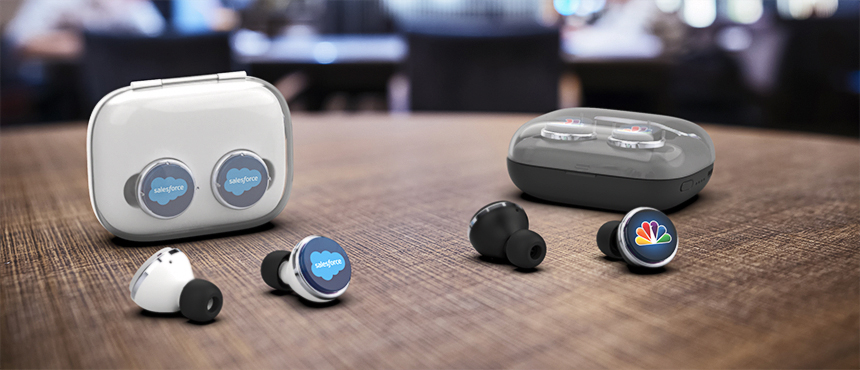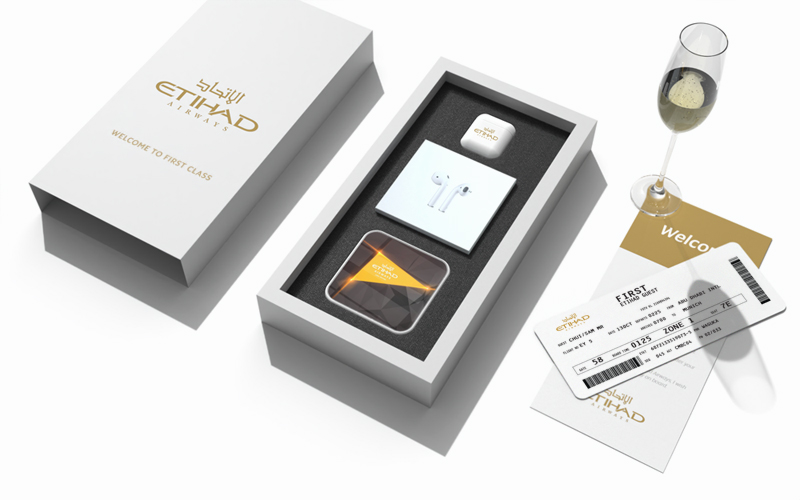How Do Wireless Headphones Work? [2022]
 Did you know that not all wireless headphones use Bluetooth? Even though Bluetooth is the main standard used today (because it’s better overall), the market uses the two terms interchangeably. Not only that, but Bluetooth is progressing every day, so it’s good to know what the best options are before buying wireless headphones.
Did you know that not all wireless headphones use Bluetooth? Even though Bluetooth is the main standard used today (because it’s better overall), the market uses the two terms interchangeably. Not only that, but Bluetooth is progressing every day, so it’s good to know what the best options are before buying wireless headphones.
Wireless can be a better option than wired headphones for many reasons, including convenience, safety, storage and the ability to freely move around. In this article, we’ll discuss how wireless headphones work, differences between the types, and considerations before buying.
What Does “Wireless Headphone” Mean?
Wireless headphones include any headphones that work without a cord that connects to the device. This includes over-the-head and behind-the-neck headphones.
Wireless headphones also can be defined as those that use wireless communication with devices to function. This includes radio and infrared signals, through Bluetooth or wireless headphones, that connect or pair using a chip or other embedded software.
 Advantages of Wireless Headphones
Advantages of Wireless Headphones
The revival of wired headphones by Gen Z doesn’t change the facts – most headphones that break have cords. Things like traveling, commuting, exercising and more are usually responsible for shortening the life of headphones with cords. It’s just easier to not have to deal with a cord when it comes to headphones, plus you get more for your money when they last longer.
More benefits of wireless headphones include:
- Earbuds that come in charging cases mean you can have them fully charged all day, plus some charging cases charge multiple items on-the-go;
- They can connect with more devices, such as those without a headphone jack;
- You can have more space to move about if you’re not carrying the device you’re listening on with you – especially beneficial for TVs and computers, working out and talking on the phone;
- It’s safer because the cord won’t become a hazard when wearing and storing them.
 Difference Between Bluetooth and Wireless Headphones
Difference Between Bluetooth and Wireless Headphones
The key difference between Bluetooth and wireless headphones is what they use to connect wirelessly with other devices.
- Bluetooth is connected by radio signals via an embedded chip, which is universally accepted by any Bluetooth-enabled device.
- Wireless is connected by either infrared or radio signals, and is only accepted by the device it came with because it uses an adapter instead of a chip.
Here are the other differences between the two:
- Range: Wireless headphones have longer signal reach than older Bluetooth headphones preceding Bluetooth 5.0, which have 30 feet of reach. Wireless headphones have up to 300 feet, and Bluetooth 5.0 can reach up to 800 feet.
- Sound quality: Wireless headphones have Bluetooth beat, but Bluetooth 5.0 has improved over older versions. Bluetooth 5.0 is also more compatible with other devices and is the most up-to-date.
- Batteries: Wireless use non-rechargeable batteries that can be changed when they run out of juice, and Bluetooth uses rechargeable batteries.
 How Do Wireless Headphones Work
How Do Wireless Headphones Work
Wireless headphones work by using a transmitter, or base unit, which uses either infrared or radio signals, to connect or pair to the audio of another device. Here’s how they work:
- Wireless headphones use built-in receivers to read what is known as the carrier wave, a single-frequency wave, sent from the paired audio source.
- The audio signal, called the modulating signal, is encoded into the carrier wave by the transmitter and carried by air to the receiver. These carrier waves can be in radio or infrared frequencies, usually within the audible range of 20 Hz-20,000 Hz.
- The wireless headphones have a receiver that reads the carrier wave and decodes the modulating signal when paired with the connecting device.
- If the signal is digital, the receiver converts it to analog.
- The analog signal is amplified by an internal amplifier, which is then sent to the headphones.
- The headphone drivers, which act as transducers, convert the audio signal, which is electromagnetic energy, into sound that we can hear, which is mechanical energy.
How Infrared Wireless Headphones Work
Infrared (IR) wireless headphones work like a TV remote. The audio signal is sent using infrared waves from the base unit, embedded in the device to which the headphones are paired, to the headphones. IR needs a clear line between device and headphones to be able to send a signal, which limits the range of distance to around 23 feet maximum.
IR is rarely used – radio is more common, although IR actually has better sound quality than radio because it uses high-frequency pulsation to send signals.
 How Radio Signals Work
How Radio Signals Work
Radio is stable and more powerful than infrared. The fact that it uses radio waves makes it easier to use because it allows more range of motion, around 300-nearly 500 feet maximum without big furniture or walls in the way.
Radio waves are electromagnetic and range from 30 Hz-300 GHz. They are energy waves that cause oscillations of magnetic and electric fields. They travel at the speed of light in a vacuum, and in air are slower because of other molecules, though still extremely quick. Most headphones that use radio frequency (RF) are 900 MHz-3.2 GHz, and Bluetooth ones are 2.400-2.4835 GHz.
Stereo audio signals require a multiplexer in the transmitter to combine the left and right channels into one. The receiver has a demultiplexer to split them into left and right again. Because radio has longer wavelengths than other electromagnetic waves, they can travel farther and go through objects. RF can be read by a high number of receivers tuned into the correct frequency. While this does mean that RF headphone signals can be intercepted, it’s unlikely due to the low-power, ultra-high frequency radio waves (UHF) used.
 How Wireless Bluetooth Headphones Work
How Wireless Bluetooth Headphones Work
While Bluetooth headphones do use radio waves, they’re usually talked about separately because not all RF headphones are Bluetooth.
Bluetooth transmission uses a chip, or codec embedded in each device that can connect with 2.4 Ghz frequency UHF waves. The codec is actually a software program that compresses data, before decompressing it once it’s received by the user. The headphone acts as a transducer to convert signals to audio output, and the radio frequency is sent via the air. As long as both devices have the same codec, the connection will work. Since Bluetooth-enabled devices all have the same codec, they’re able to be used widely. Bluetooth is generally digital rather than analog, and uses pulse-shift keying (PSK) modulation (vs. FM, which is used by analog receivers).
Bluetooth headphones have 3 steps to connect to a device. First, the device searches for nearby connections. Next, you choose your headphones or other device to connect and tell it to pair. The last step is the connection. Bluetooth connections are very secure and won’t be intercepted by a third device because they use weak signals. They are also easier to set up and use than infrared.
Wondering where Bluetooth got its name and logo? It’s a nod to a Danish King, Harald “Bluetooth” Gormsson, who ruled Denmark and Norway from around 958-986 BC, and united the tribes of Denmark into one unified kingdom. So, it was thought that Bluetooth devices united in a similar way. The logo was made from an ancient rune of the king’s initials.
Range of Wireless Headphones
Most headphones have a 30-foot range. Most wireless headphones will lose their connection if you go over. However, there are more expensive headphones that can reach farther, and newer Bluetooth headphones have more range; Bluetooth 5.0 has up to 800 feet. All Bluetooth devices’ range can be disturbed by obstacles like walls, furniture and other electromagnetic fields from other devices (like microwaves, for instance).
 Considerations before Buying Wireless Headphones
Considerations before Buying Wireless Headphones
When buying wireless or custom wireless headphones, it’s important to know what features you value, because it may not be in your budget to pay hundreds of dollars for the ultimate pair. Here are the key things to think about before purchasing:
- Audio quality: The codec used by the headphones makes a difference, as well as the amount of latency, or the time it takes for the sound to process to the headphones. Bluetooth 5.0 will have better sound quality, and you may need to pay a bit more if you want better sound.
- Noise cancellation is an added feature of some headphones, and usually adds to the cost, so that’s another point to consider.
- Battery life: Battery life can last 3-8 hours on average, depending on the headphones. Know how often you’ll be able to charge yours or if you’ll have a backup on hand.
- Signal reach: Bluetooth 5.0 models will have longer signal reach. Think about what you’re using wireless headphones with, and how far you want to be able to travel from your device(s) while listening.
- Be sure to note that the lower Bluetooth version of the two devices (headphones and phone, for instance) will take precedence.
- Design and size: Choose from over-the-ear, behind-the-neck, on-ear, or in-ear design. It just depends on preference and ergonomics.
Conclusion
When buying wireless headphones, there are a lot of options. Between the type of wireless tech, design, battery life and more, the price of these headphones has an extremely wide range. We hope this article helps you learn about how wireless headphones work and can help you discover your headphone preferences!